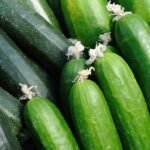Have you ever found yourself in the midst of a recipe, only to stumble upon a recipe that calls for measurements in pints rather than cups? Fear not! Understanding kitchen measurements, especially the conversion between pints and cups, is essential for any aspiring chef or home baker.
How Many Cups in a Pint?
In this comprehensive guide, we’ll delve into the intricacies of kitchen measurements, unravel the mystery behind pint-to-cup conversions, and equip you with practical tips for accurate measuring. Whether you’re whipping up a batch of cookies or concocting a savory stew, mastering these fundamentals will elevate your culinary prowess.
Understanding Kitchen Measurements
Before we embark on our exploration of pint-to-cup conversions, let’s take a moment to familiarize ourselves with the basics of kitchen measurements. In the realm of cooking and baking, precision is paramount. Whether you’re measuring flour for a cake or oil for a marinade, using the right amount of each ingredient is crucial for achieving culinary perfection.
Deciphering Pints and Cups
In the lexicon of kitchen measurements, both pints and cups play integral roles. A pint, denoted by “pt” or “p,” serves as a standard unit of volume measurement, encompassing both liquid and dry ingredients. On the other hand, a cup, symbolized by “c” or “C,” represents a familiar measure of volume, typically equivalent to 8 fluid ounces in the United States.
Pint-to-Cup Conversion Made Simple
Now, let’s tackle the burning question: how many cups are in a pint? In the United States customary system, one pint corresponds to 2 cups. This straightforward conversion allows you to effortlessly transition between pints and cups in your culinary endeavors.
To calculate the number of cups in a given quantity of pints, simply multiply the pint value by 2:
Pints to Cups Formula
Cups = Pints × 2
For example, if a recipe calls for 3 pints of broth, you would need 6 cups to meet the measurement requirement.
Navigating Measurement Variations
It’s worth noting that measurement standards may vary across regions and culinary traditions. While the US pint is widely recognized as equivalent to 16 fluid ounces, its UK counterpart, known as the Imperial pint, encompasses approximately 20 fluid ounces. Therefore, when following recipes or converting measurements, it’s essential to discern between these distinct pint standards to ensure accuracy.
Tips for Precise Measurements
Achieving precise measurements is essential for culinary success. Whether you’re measuring liquid ingredients or dry goods, employing the correct techniques can significantly impact the outcome of your culinary creations.
- Liquid Measurements: Utilize transparent, spouted measuring cups for liquid ingredients, ensuring accuracy and ease of pouring. Maintain eye level with the measurement scale for precise readings.
- Dry Measurements: Employ flat-top dry measuring cups for dry ingredients, leveling off excess with a straight edge for consistent results. Consider the density of each dry ingredient and adjust measurement techniques accordingly.
- Weighing Ingredients: Supplement traditional measuring methods with a kitchen scale for unparalleled accuracy, particularly with dry ingredients prone to variations in density.
Conclusion
In the dynamic realm of culinary exploration, mastering kitchen measurements is akin to wielding a chef’s most potent tool. By understanding the relationship between pints and cups, you’ll unlock a world of culinary possibilities, seamlessly navigating recipes with confidence and precision.
Armed with this newfound knowledge and practical insights, you’re poised to embark on culinary adventures with newfound confidence, transforming simple ingredients into culinary masterpieces one measured step at a time.


